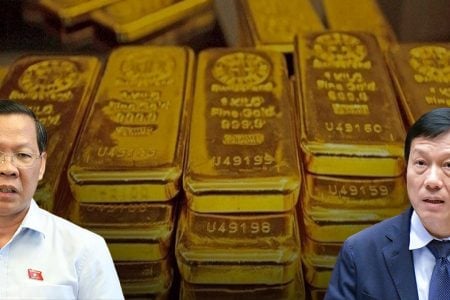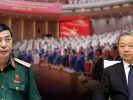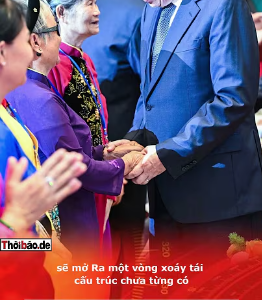Diplomatic tensions between the Czech Republic and Russia have increased after the Prague government removed the statue of Marshal Ivan Konev, the hero of the Soviet Union on April 3, 2020, to place in the museum.
The Russian government immediately took two steps: opening a criminal investigation on the violation of the Russian military emblem, and asking the Czech Republic to „return the statue of Mr. Konev.“
Russia’s Defense Minister, Sergei Shoigu, told his Czech counterpart Lubomir Metnar that Russia was willing to pay for transport costs to bring Mr. Konev to Moscow.
But the Czech government said the resolution of the statue was decided by the city government of Prague, according to Reuters.
Since the end of 2019, the Prague 6 district and local council members of a center-right party in the Czech Republic have proposed to move the Konev statue away.
This decision caused strong opposition from the Russian Embassy in the Czech Republic and was condemned by the Czech Communist Party.
The statue was erected in the Soviet Union’s socialist bloc has been considered a symbol of the past by part of Czech public opinion after the Cold War.
Later, because of much controversy, the Prague government temporarily covered the statue to avoid being smeared by some anti-Russian people.
By early April this year, the statue was officially taken to another place.
The city of Praque also rejected a Russian request to return the statue and said it would „treat politely“ with the statue of Mr. Konev.
It looks like people will bring this statue to a museum.
In some postcommunist Eastern European countries, there has been a phenomenon of old leaders, including Lenin, Stalin, being put into „statue parks“ as in the Baltic region, and in Hungary.
On this occasion, a number of European newspapers recounted the history of difficult relations of the Czechs with its giant neighbor Russia and the story of „work and crime“ with Soviet characters.
The Soviet Union, and Russia later regarded Marshal Ivan Konev as „the liberator of Prague.”
Marshal Ivan Konev was greeted by communist Prague workers groups when he led the Red Army in the city on May 9, 1945.
But some Czech historians say Konev brought the Red Army to Prague on 9 May 1945 after German solfers left the city several days before.
In fact, in the British accounts of the fact that in the last days of World War II in Eastern Europe, both the US and Soviet forces only „passed“ the city of Prague to focus on Germany.
General Dwight Eisenhower, commander-in-chief of the Anglo-American-French forces in Europe agreed with General Aleksei Antonov of the Soviet Union that American troops would stop at the Karlovy Vary (Carlsbad) – Plzen-Ceske Budejovice.
Soviet troops after opening the front in Slovakia only considered to attack Germany in Dresden.
The United States also sent a couple of police officers to drive from Plzen into Prague to see what the situation was like, they did not stay in the city but returned in the day.
The Soviet Union only opened Operation Prague on 7 May 1945 after seeing that the Czech communist guerrillas had taken control of many of Prague’s neighborhoods.
After advancing into the Czech capital, the Soviet Union immediately surrounded and killed non-communist Czech activist groups.
For many Czechs, Marshal Konev was responsible for bringing Soviet troops to suppress the 1956 Budapest uprising in neighboring Hungary, and mobilize Warsaw Pact troops to invade Czechoslovakia and suppress Prague uprising in 1968.
Czech people cannot forget the historical event called „Prague Spring“ which was bloodyly suppressed by Soviet troops in 1968.
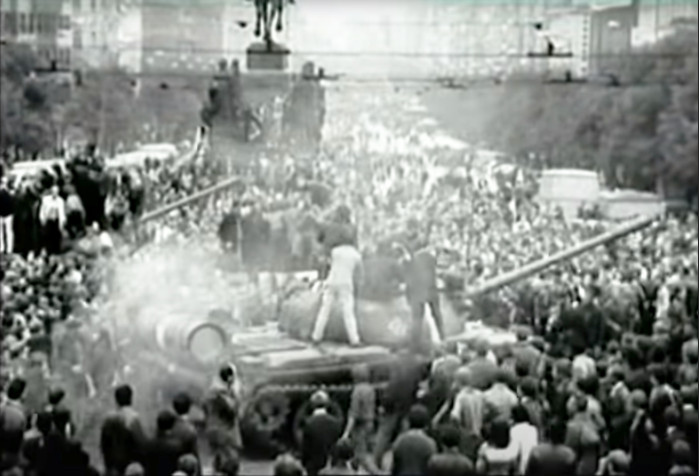
On August 21, 1968, dozens of people were killed in the military crackdown of Soviet troops and by five nations participating in the Warsaw Pact.
Soviet tanks pulled into the city, crushing the test of „socialism with a human face„.
Several leading members of the Czechoslovak freedom movement were arrested, including Prime Minister Alexander Dubcek.
The Soviet news agency, Tass, said the „resistance“ was carried out at the request of members of the government and the Communist Party leaders of Czechoslovakia, against „anti-revolutionary forces„.
However, in a secret speech broadcast on the radio, Czech President Ludvik Svoboda condemned the Warsaw Pact allies‘ occupation of territory illegally, and was done without agreement of the government of Czechoslovakia.
The then US President, Lyndon Johnson, said the invasion was a clear violation of the UN Charter, and the reasons the Soviet Union offered to justify it were „entirely fabricated„.
„It was a sad commentary in the minds of the communists when they thought that the sign of freedom in Czechoslovakia was considered a fundamental threat to the security of the Soviet system,“ he said.
Czechoslovak authorities ordered their overwhelmingly large army not to fight back, and called on people to restrain.
The changing direction of Czechoslovakia began when Mr. Dubcek, a Slovakian, became the leader of the Communist Party in January 1968.
A broad-based democratic reform program began to be launched, opening the „Prague Spring“ movement.
On August 21, 1968, crowds gathered in the streets, chanting in support of Mr. Dubcek and demanding that foreign soldiers withdraw.
Most of the protest took place around the Prague radio area.
Later, the Czechs bombed gasoline and even tried to take over Russian tanks.
Reports say that some tanks and trucks carrying ammunition were destroyed, but Soviet soldiers responded with machine guns and artillery fire. At least four people were shot dead.
In the areas of Wenceslas Square and Old Town, hundreds of young people erected barriers and overturned large trucks to block the enemy’s advance.
The Soviet commanders and the Warsaw Pact’s five members then imposed martial law at night and threatened to shoot anyone who violated the order.
All rail, road and air routes out of Czechoslovakia were closed while foreign troops continued to enter. An estimated 175,000 soldiers participated in the operation.
After the invasion, Dubcek and other political figures were banned from operation and replaced by a harsh repressive communist regime. All previous reforms were declared invalid, or abandoned, not implemented.
The invasion was strongly condemned in the world.
Significantly, there were communist parties in Yugoslavia and Romania claiming they had nothing to do with Soviet actions.
Just like what happened in Hungary in 1956, the West did nothing.
At that time, the United States was in the middle of the presidential election and was busy with the Vietnam War.
The Communist Party was finally overthrown in Czechoslovakia on November 24, 1989, and Mr. Dubcek gloriously returned to Prague.
He became the leader of the postcommunist government in what became known as the Velvet Revolution.
In the Vietnamese press, recently said that the authorities in Nghe An have rejected the ‚misrepresentation‘ of Lenin statue in Vinh City which is about to be started construction for people to admire.
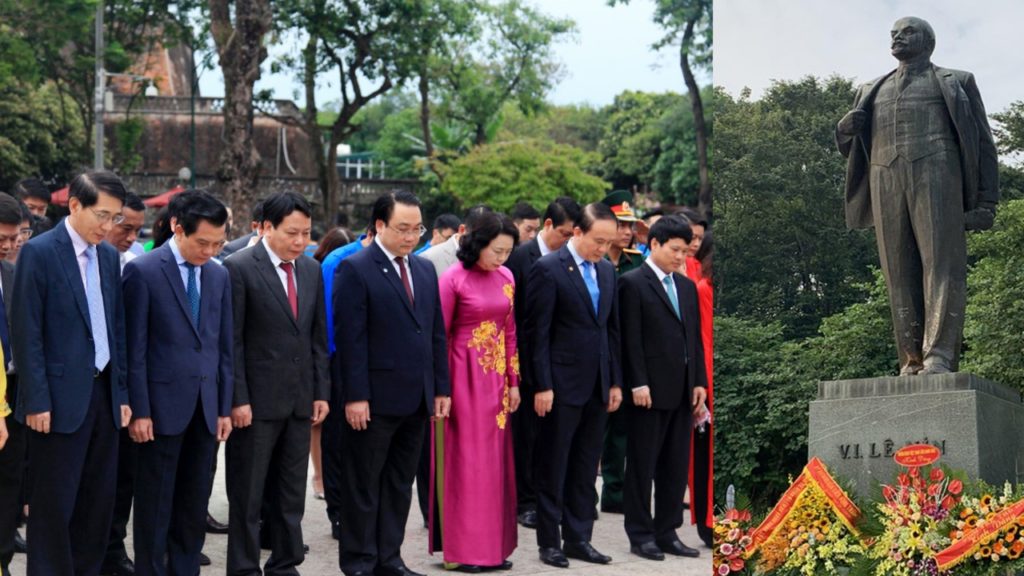
Nghe An Province said the 3-meter-high Lenin statue in Russia will be brought to Vinh City when the project is completed and expected to be completed by the end of March this year. According to information published by Vietnam newspaper last weekend, this is a project „with the consent of the Central Government, Nghe An Province“ and Vinh City is under construction.
The monument is expected to be located in Nga 5 of the city with a total project area of about 4,300 m2.
„The statue is 3m high, cast in bronze, made in Ulyanovsk province, Russia, then transported Nghe An,“ the Vietnamese newspaper quoted from Nghe An provincial party committee.
„This work represents a special friendship between Nghe An province – the hometown of the great Uncle Ho and Ulyanovsk – the hometown of Lenin, the leader of the international communist movement and workers, and also demonstrates friendship between Vietnam and Russia. „
On Vietnamese social networks over the past time, there have been some critical comments about this project.
The first to be raised is the high cost of construction in a poor province.
Thanh Nien newspaper confirmed that the cost of building flower gardens and fountains for this project is more than VND 8 billion.
Now, the Vietnamese newspaper said that „the leaders of the provincial Propaganda Department affirmed that the information on social networks in the past few days was incorrect and distorted with malicious intent.“
However, Nghe An provincial party committee did not say what „incorrect information“ was.
The second reason, according to critics, is the obsolete character of Lenin, the symbol of the violent communist model in Russia after 1917.
The old lady in Tan Thanh commune, Yen Thanh district, Nghe An province – received an envelope inside the commune with only 10,000 dongs to celebrate the New Year 2020
An article in the Vietnamese newspaper in Hungary in 2014, said that worshiping Stalin or Lenin were „blind personality worship.“
In addition, „Lenin was more or less a supporter of the application of revolutionary violence as an essential and necessary means to resolve social and political conflicts„.
After the Soviet Union disbanded, many republics once belonged to the federation brought down the Lenin statue, considering it a symbol of oppressive dominance from Moscow.
The presence of Lenin in statues in Hanoi and in books and pictures of the Vietnamese state has a slightly different meaning.
It is the assertion of the unique, entire leadership role of the Communist Party of Vietnam, which is still Leninist.
Facebook Nhat Chi Mai said: Lenin is a sadist, a criminal of humanity. Did the Nghe An provincial government erect Lenin statues for worship of violence and killing? Facebook AB Bui recalled: Lenin was the one who initiated the Soviet-style socialist state model. It is estimated that, in the 20th century, the communist states killed hundreds of millions of people and Lenin was responsible to humanity for this crime.
Nghe An’s event of building a memorial park and erecting Lenin statue caused tens of thousands of social network users to pass each other to review information, that in 2018, Nghe An only earned VND12.691 billion while spending up to VND23.780 billion.
The shortfall due to the difference of revenue and expenditure of more than VND 11,000 billion, of course, continues to apply as it has been, and will continue to ask for support.
Trung Tran tried calculating (taking VND11 trillion for 365 days) and reminded everyone: Every day, the whole country had to give Nghe An about 30 billion to Nghe An spend and eagerly … erect Lenin statue.
Hoang Lan from Hanoi – Thoibao.de (Translated)
















